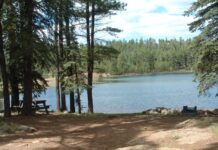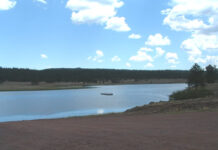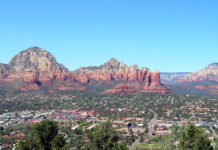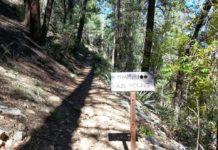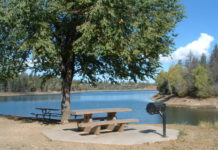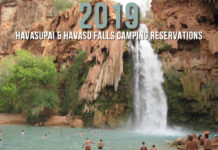1. Food/ Food Storage
Everyone has to eat! Your choices vary from freeze dried food to preparing your food prior to your trip and making the meal at camp or doing it like you do at home and prepping and cooking a full scale meal at the campsite. Grab a decent cooler for you food and beverages. If you are going on a longer trip, I would highly suggest bringing two coolers, one for food and one for beverages. as far as ice goes, think about bringing block ice for your food as it will last much longer than cubed ice. I prefer cubed ice for my beverage cooler.
2. Tent
Your method of shelter can be as simple as a tarp and a piece of rope tied between two trees. Tents should be functional in serving your needs while camping, not to big yet have enough room to protect your gear from the elements. Here are some guidelines for buying your next tent.
Tents are advertised by how many people can fit “cram” into a tent without and gear, usually two man, four man, six man and eight man tents are the norm. there are those that are larger, but for our example, these will work. A family of four will find it rather confined in a “Four Man Tent” you will be crawling all over each other with no spare room to put your gear and would probably frustrated with your purchase. Usually it it easier to think in terms of a minimum of 30 to 40 square feet per person. a 10′ by 10′ tent is ideal for two people and gear. A 16′ by 10′ tent will accommodate a family of four and feel spacious. You will be able to put two queen size inflatable mattresses and have walking space between. This is what I use on week long trips. When it rains, you will love the extra space in a larger tent.
3. Bedding
Start with choosing a comfort rating for the type of camping you will be doing. The rating is the minimum temperature a sleeping bag will keep the average person comfortably warm at night. Generally, sleeping bags have a rating of 0 degrees to +50 degrees. You may choose to have a couple of sleeping bags, one for winter and summer camping. Use this as a guide only, individual preference and metabolism can change the rating you might find comfortable. Also take into account whether or not you will be sleeping on a sleeping pad, a cot, or an inflatable mattress or just on the ground. In Arizona, during the summer months you may find yourself unzipping the bag during the night just to stay cool. In fact, during the summer up on the rim or in the White Mountains, I usually bring just a sleeping bag and a comforter and sleep on top of the sleeping bag using the comforter as a blanket.
What you sleep on is even more important than what you sleep in if you ask me. We probably have all slept on the ground in our sleeping bag in our youth, but when we get into our 20’s, comfort is much more important and many will switch over to an inflatable mattress. These are a huge improvement over the ground and most modern inflatable mattresses are pretty decent. You will probably have to replace them every other year or so and they tend to leak eventually. If you want an even better sleep try buying a camping cot. Camping cots are very durable and last years if maintained and packed in their bags. I use a cot and a self inflating sleeping pad. I have to say, it rivals my bed at home and since I put in so much time out camping each summer, I don’t think I’ll ever go back to an inflatable mattress. Another great thing about a camping cot is that you now have room to store your gear and clothing under you cot, giving you more room in the tent.
4. Water
Water may be the single most important thing to bring when camping, you have to plan for 1 to 1 1/2 gallons per person per day just for drinking. I almost always bring a 5 gallon water container when I go camping, it makes life easier at the campsite when you don’t have to walk over to the water spigot every time you need water. It also helps when you do the dishes after dinner at camp. On longer trips, I bring a portable shower and just drop the pump into the jug to get a nice refreshing shower.
If the campground you are planning on staying at does not have potable water, you will need to either bring it or sterilize water found at the source (i.e. a stream, lake etc.). Iodine tablets bought at the local outdoor store will effectively kill most biological elements. When using Iodine tablets, remember to wait at least one hour before consuming the water to allow the iodine to work. Persons with thyroid problems or on lithum, women over fifty, and pregnant women should consult their physician prior to using iodine for purification. You can add vitamin C to the water for better tasting water.
Other methods of sterilizing water for consumption are Boiling or filtration. When boiling water, make sure that a temperature of at least 185 degrees is maintained for a few minutes.
There are several device on the market for filtering water. A filter pumps water through a microscopic filter that is rated for a certain sized organism. A “water filter” filters out particles “protozoa” from 1.0 to 4.0 microns. A “microfilter” filters out particles “bacteria” from 0.2 to 1.0 microns and a water purifier filters out particles “viruses” down to 0.004 microns.
5. First Aid Kit
Things to consider adding to your first aid kit. There are several prepackaged First aid kits. You don’t want to be stuck out in the middle of nowhere without a first aid kit.
- Bandages
- Scissors
- Personal Medication
- Tweezers
- Hydrocortizone Cream
- Thermometer
- Aspirin, Tylenol, Ibuprofen (to reduce swelling)
- Eye Wash
- Gauze Pads
- Sun Block with a high SPF & UVA, UVB
- Medical Tape
- Snake Bite Kit
- Antiseptic Wipes
- Neosporin
6. Lighting
If there is one thing that has changed in camping gear in the past decade, the flashlight is it. virtually gone are the bulb flashlights of the past. LED technology has taken your old standby and souped it up all while increasing your battery life by leaps and bounds. Headlamps are in and there are a plethora to choose from. When looking for a headlamp, look for one with a minimum of 300 lumens. I personally have one that is 2000 lumens and it really helps around camp when the sun goes down.
A lantern is a must at night around the campsite, if you don’t have one, you will be sorry. For a cheap price, you can get a quality lantern and there are many styles out there. You can go with electric, kerosene, white gas, propane or go green and buy a hand crank or solar lantern.
7. Clothing
Bringing the proper clothing can save you from a desert storm, which can roll in without warning and put a damper on all activities around the campsite. Temperatures can vary from very hot to very cold in one day in Arizona, so make sure you have everything to protect you from the sun in the day and the chilly nights.
8. Camping Stove
We all want to cook over the open flame of the fire but not all things cook well that way. Take scrambled eggs or pancakes when you need to control the heat, nothing beats a camping stove. Oh, don’t forget the fuel.
9. Cooking Utensils
You have to cook in something when using a camp stove. Your options are virtually limitless. From stackable pots, pans and plates to plastic ware and paper plates to gourmet cookware, what you bring with you is totally up to you and the way you roll when cooking at the campsite.
10. Multi-Tool / Knife
If you are the backpacking type, a Swiss army knife can be your best friend. For those who choose to tent camp, a multi-tool is the Rolls Royce of swiss army knives. Much more versatile and rugged, this tool is your one stop toolbox.

